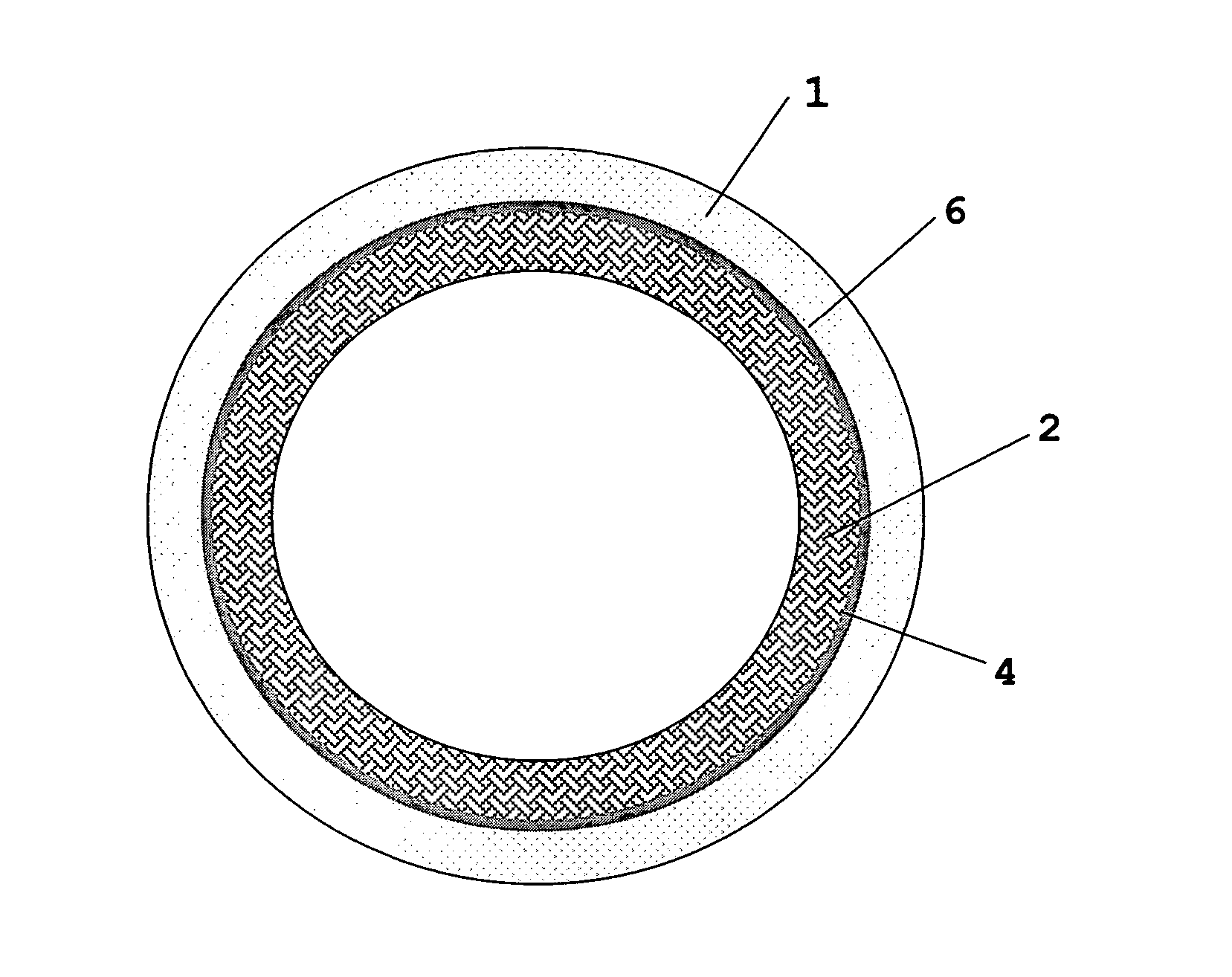Thermal spray metal on low heat resistant substrates
a technology of low heat resistance and metal spraying, which is applied in the direction of molten spray coating, coating, plasma technique, etc., can solve the problems of limiting the application to which the part can be used, and the surface contour and details of the low heat resistance substrate cannot be effectively reduced, so as to achieve low shrinkage or warpage, maintain a temperature warm, and simple use
- Summary
- Abstract
- Description
- Claims
- Application Information
AI Technical Summary
Benefits of technology
Problems solved by technology
Method used
Image
Examples
Embodiment Construction
[0014] As shown in the drawing, the basic steps of the method comprise: [0015] (a) preparing a suitable part (substrate) having a low heat resistant fiber reinforced material such as carbon fiber 2. [0016] (b) applying an adhesion promoter 4 to the surface of the part. This is required to assure adhesion of the first coat of sprayed metal. PVA's have been found most satisfactory for most applications. The adhesion agent must have adequate thermal and chemical characteristics to be compatible with the sprayed metal and not dramatically reduce surface detail. The adhesive should be applied carefully to produce a uniformly thin film. [0017] (c) allowing the adhesive to dry for a few minutes or while slightly tacky depending on the adhesive, and then spraying the adhesive surface with a sprayed metal 6 (bondcoat), such as a nickel-chrome material. The first bondcoat is, obviously, the most critical because it is this coat which serves as the bond surface. The bondcoat 6 is normally acco...
PUM
| Property | Measurement | Unit |
|---|---|---|
| thickness | aaaaa | aaaaa |
| thickness | aaaaa | aaaaa |
| thickness | aaaaa | aaaaa |
Abstract
Description
Claims
Application Information
 Login to View More
Login to View More - R&D
- Intellectual Property
- Life Sciences
- Materials
- Tech Scout
- Unparalleled Data Quality
- Higher Quality Content
- 60% Fewer Hallucinations
Browse by: Latest US Patents, China's latest patents, Technical Efficacy Thesaurus, Application Domain, Technology Topic, Popular Technical Reports.
© 2025 PatSnap. All rights reserved.Legal|Privacy policy|Modern Slavery Act Transparency Statement|Sitemap|About US| Contact US: help@patsnap.com


